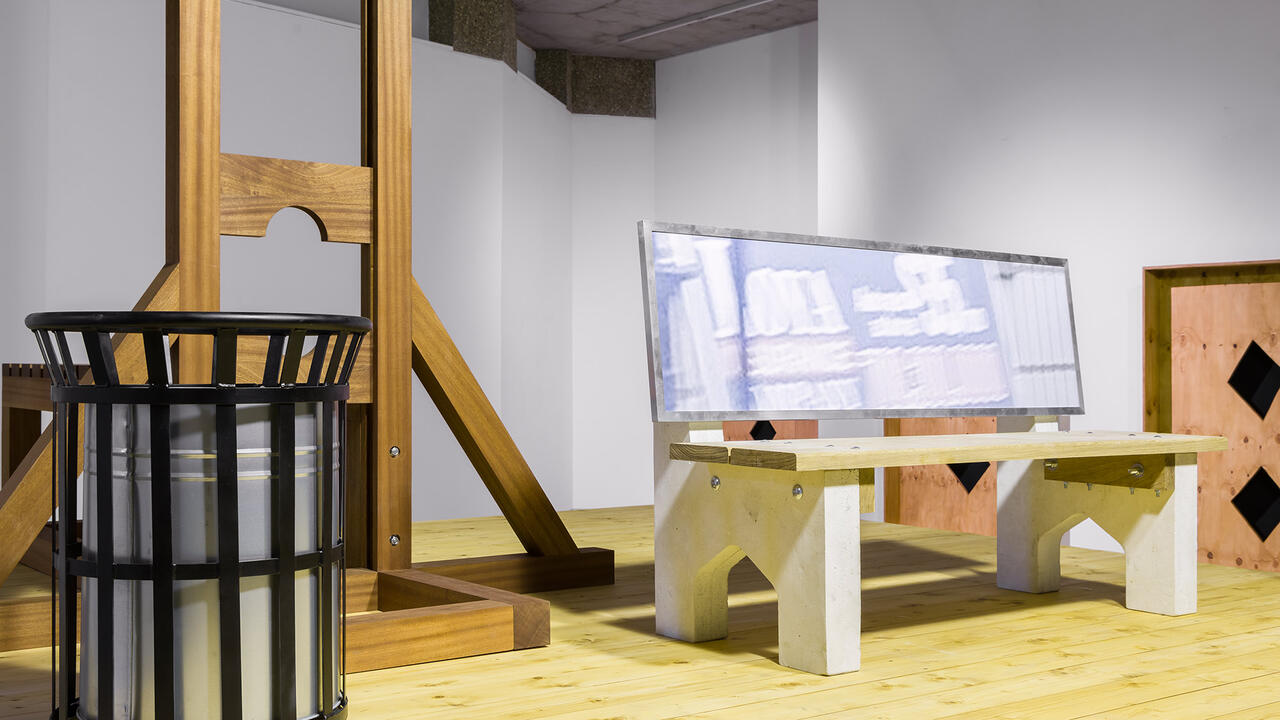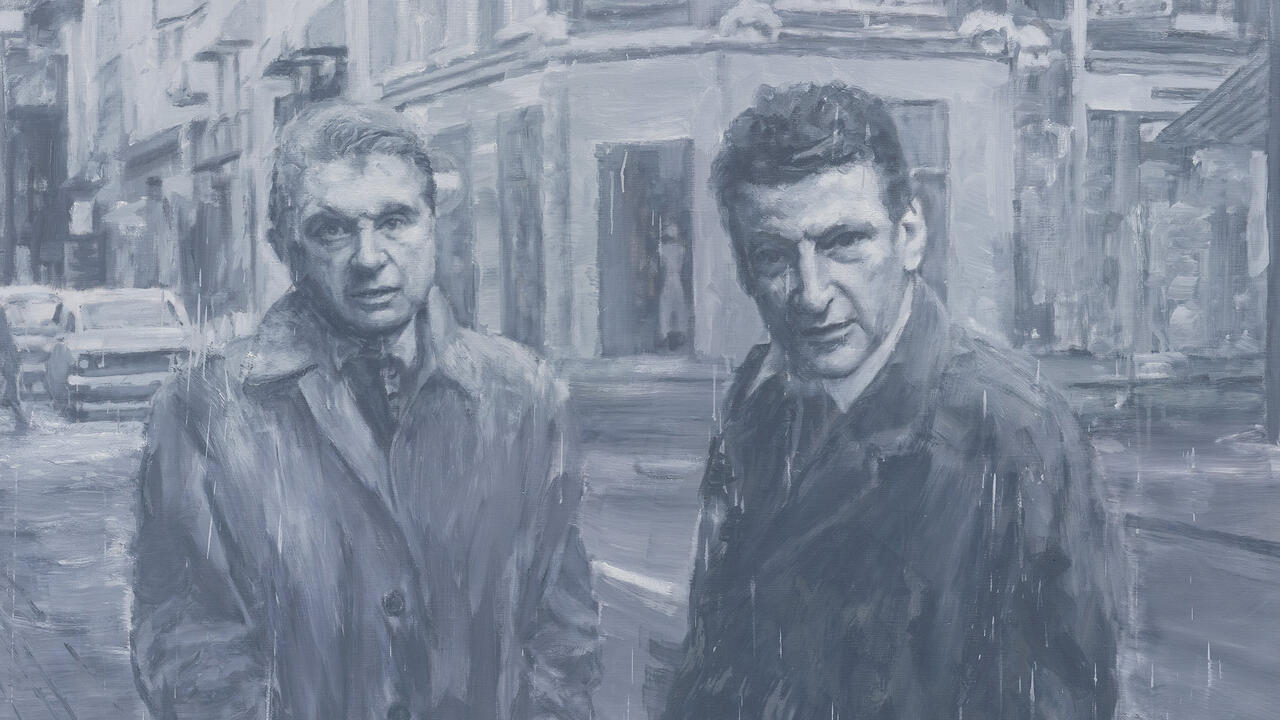Serpentine Pavilion Architect Frida Escobedo Talks Beautiful Materials and Mexican Modernism
The youngest architect to be entrusted with the yearly Hyde Park pavilion discusses the ideas behind her latticed courtyard design
The youngest architect to be entrusted with the yearly Hyde Park pavilion discusses the ideas behind her latticed courtyard design

‘Beautiful materials exist everywhere,’ says Frida Escobedo, holding a bulky brick stamped with ‘Chicago’ in capital letters, a leftover from her participation at the city’s architecture biennale in 2015. Reclaimed from the debris of a demolished church, it now sits amongst many other curiosities, meticulously displayed across her studio in the Juarez district of Mexico City. ‘Sometimes, beautiful materials are not very sophisticated.’
For the young Mexican architect, the use of locally-sourced materials is central, including in her much-anticipated Serpentine Pavilion commission, which opens in London’s Hyde Park on 15 June. Designed as an enclosed courtyard (a popular feature in Mexican homes) the structure is composed of two rectangular volumes, walled with columns of British-made, grey cement roof tiles, chosen for their dark colour and texture. They are arranged as a lattice, known in Mexican architecture as celosia – a decorative element that brings light and air into the home. The process, she suggests, is ‘almost like doing a tapestry. You have something that’s industrially produced, but then you have this craft of arranging it in a very manual way.’

Beyond its materiality, a focus of this year’s Serpentine Pavilion is an idiosyncratic reflection on temporality. While the outer walls are aligned with the gallery’s eastern facade, the axis of the internal courtyard aligns directly to the north, saluting the Prime Meridian, located at the Royal Observatory in Greenwich. This dialogue anchors the temporary pavilion in its local context, while retaining its pertinence after the structure leaves London (as in previous years, it will be sold at the end of the summer). The pavilion’s latticed facade highlights the movement of light and shadow throughout the day, mapping time – a common feature of religious architecture, which somewhat contrasts with the worldly function of the Prime Meridian. (Established as longitude 0° by an international agreement in 1884, when Britain was at the height of her military and industrial powers, the meridian is a vestige of the ‘empire on which the sun never sets.’) But this contrast allows a subtle interplay between absolute and relative time, a kind of weaving together of St Augustine’s three presents: memory, direct experience and expectation. ‘Architecture is always a projection of something else,’ muses Escobedo: ‘Even when it’s built.’
At 39, Escobedo is the youngest architect to take up the high-profile public commission in Kensington Gardens, now in its 18th edition. Her modest but expanding studio, which she founded in 2006, today is just shy of 10 architects. ‘We’re kind of on top of each other,’ she laughs, gesturing at her co-workers as she explains that they are looking to relocate to a bigger space. And the Mexican architect knows a thing or two about studios. She first made waves in 2012 when she rehabilitated the former home and studio of iconic Mexican muralist David Alfaro Siqueiros, in the town of Cuernavaca.

Built in 1965, La Tallera was the brainchild of Siqueiros and his comrade Diego Rivera, who envisioned it as a laboratory for new techniques and ideas in muralism. After purchasing the central workshop, Siqueiros acquired the adjacent plot of land, allegedly to build a weekend house. ‘It’s full of contradictions,’ says Escobedo, amused, pointing to the middle-class aspirations of Siqueiros, famously an active member of the Mexican Communist Party. This duality between the domestic and the public informed her proposal, which reconfigured two original, gigantic Siqueiros murals (originally installed in the indoor patio) to frame a new entranceway that opens up onto the adjacent public square. ‘It’s like creating a character,’ says Escobedo of the new public facade, also alluding to the muralist’s notoriously theatrical persona. The complex – which today houses a public gallery, workshop and artist residencies – was also draped in a perimeter of triangular concrete lattice, not dissimilar to the Serpentine Pavilion in that it allows a play on light and transparency.
While Mexico City enjoys its current nomination as World Design Capital (sometimes dubbed the ‘Olympics of Design’), this year also marks, somewhat ironically, the bleak 50th anniversary of the 1968 Summer Olympics. Under the direction of the late architect Pedro Ramírez Vázques, 1968’s Cultural Olympiad profoundly shaped the country’s design legacy, obscured by the tragic, government-orchestrated Tlatelolco massacre, in which hundreds of protesting students and civilians were killed. ‘This is where the dream broke,’ Escobedo says solemnly.

At the recent Biennale d’Architecture d’Orléans, Escobedo revisited the Ruta de la Amistad (Road of Friendship), a circuit of 22 large-scale, permanent sculptures conceived by international artists and installed across the Olympics venues ahead of the games. (Today, most of the works are in decay, overshadowed by the Périferico Sur highway). The architect presented a reproduction of the precarious-looking metal frame behind the imposing concrete sculpture by French artist Olivier Seguin, exposing the dynamic between constructional and ornamental imperatives. Her piece was inspired by an early installation shot of the work in the making, which she came across while visiting the archives of the FRAC Centre in France. ‘That picture just presented the reality of 1968,’ Escobedo recounts, reflecting on the ambiguous promises of architectural modernism during the construction of Mexico’s national identity. ‘It’s all a spectacle.’

In recent years, a proliferation of selfie-friendly architectural projects, expansions and renovations – particularly in the art sphere – has brought about criticism for yielding to consumerist display and prioritizing instant gratification. Architecture, without a doubt, is in conspiracy with the society of spectacle. Is that always a bad thing? The 19th-century German architect Gottfried Semper upheld that architecture needs to be at once functional and ornamental, as if a building could only come to life with a touch of theatricality. This idea resonates with Escobedo’s architecture, where materiality delves at once into memory, direct experience and expectation: like a projection of something else.
The Serpentine Pavilion 2018 is on view from 15 June until 5 October in Kensington Gardens.
Main image: Serpentine Pavilion 2018 designed by Frida Escobedo, Serpentine Gallery, London. Courtesy: © Frida Escobedo, Taller de Arquitectural; photograph: © Iwan Baan





















